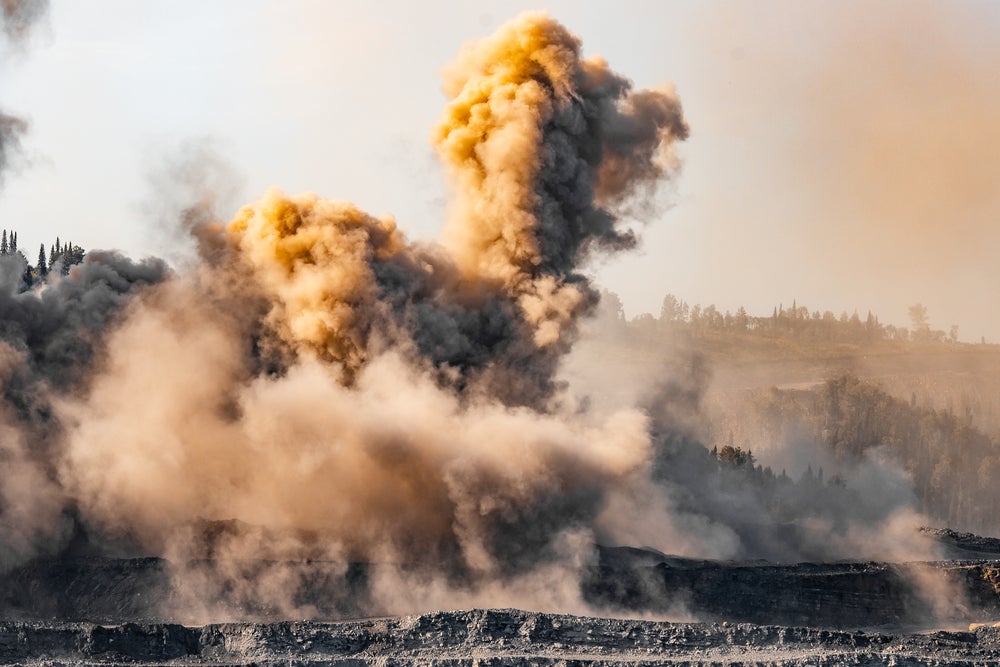Last week, US president Joe Biden pledged to send an $800m package to Ukraine, including controversial cluster munitions. As the Russian-Ukrainian conflict passes its 500th day, the Ukrainian counteroffensive has offered little substantive territorial gains whilst firing thousands of shells per day. With both sides being unable to claim much success, American politicians and military leaders have pushed for the vast stocks of cluster munitions held by the US government to be used in Ukraine.
The deployment of cluster munitions by the US is the latest use of the American stockpile since Iraq in 2003, later being banned from use or movement if the failure rate of the munition exceeds 1%. The waiving of the 2009 bill by Biden has raised eyebrows both domestically and in the international community, leading to criticism and analysis of American military policy.
A dual-purpose improvised conventional munition is a US cluster munition, a type of explosive that opens mid-air to disperse bomblets across a wide area, leaving explosive remnants that are a major source of risk. Utilising cluster munitions often results in an ‘economy of force’ whereby sending a few rounds can have an outsized effect through a larger lethal radius. Over the past year, the US has dipped into its own stocks of ammunition to keep the Ukrainian war effort afloat. This has involved sending millions of rounds of 155mm howitzer ammunition on top of all the other vehicles and planes it has sent already.
As stockpiles depleted, US politicians urged Biden in March to utilise the country’s large stock of cluster ammunition as a ‘stopgap’ until it can replenish other weaponry. Biden says that it was a ‘difficult’ decision to make, but argues the clusters are necessary to assist the Ukrainian counteroffensive while the country is unable to produce more howitzer munitions.
Cluster munitions often fail, having what is called a ‘dud rate’, with America stating that they will not send any munitions that have a dud rate below 2.5%. When these munitions fail, some remain undetonated, with ‘no reason to believe they ever become inert’ for decades after use. However, Biden claimed US-made cluster munitions are far less prone to failure than their Russian and Ukrainian counterparts – 30-40% and 20% respectively.
However, landmine clearance experts often argue that the dud rate of modern cluster munitions differs significantly from the estimates given by the American military, with most experts saying the average dud rate is approximately 20%. Even taking the lower band of a 14% dud rate, for every 100,000 cluster munitions fired there will be more than one million unexploded bombs dropped over the Ukrainian countryside.
There are separate concerns regarding the methods of testing such weapons and the transparency of the Pentagon, as tests occurred in the Arizona desert – a very different terrain to Ukraine. In urban environments, the risk of civilian collateral damage increases significantly. This was on full display in Iraq and Afghanistan, as their use distanced the population from the US military due to excess civilian deaths.
There was international outcry over the use of cluster munitions after the month-long war between Israel and Lebanon, where Israel dropped more than four million cluster munitions. In an address to the UN last year, US envoy Linda Thomas-Greenfield berated her Russian counterparts about the use of ‘exceptionally lethal weapons, including cluster bombs’ in Ukraine.
The Biden administration took prior conflicts into account when drafting the aid package; one of its main conditions regarding the donation was the strict application of these munitions on military targets. The Nato summit in Vilnius, Lithuania, this week comes against the backdrop of sending cluster munitions to Ukraine. Although there is no official international legislation that prevents the use of cluster munitions, 120 nations signed the Convention on Cluster Munitions in 2008, and the use of cluster bombs on civilian targets remains illegal. However, Ukraine, Russia, and the US aren’t signatories of this agreement.
The donation of such destructive weapons has drawn criticism from Canada, Germany, and other members of the convention. Canada and Germany in particular have reiterated their commitment to the treaty, with other nations like the UK refusing to send cluster bombs and making reserved comments about their use. The package is a reminder of how aid has progressively changed. The Biden administration has often gone back on statements made previously as the needs and pressures of the war have significantly changed Ukrainian demands.
Sending F-16 aircraft to Ukraine is a great example of how US foreign policy has warped to suit Ukraine’s (and by extension its own) needs over the past year. With most of the US’ Nato allies coming out in opposition to sending cluster munitions, the upcoming Nato summit will likely include discourse about the viability and ethicality of these controversial weapons. As the war progresses, American leadership will need to decide how much its allies’ cooperation in aiding the conflict is necessary and to what lengths it will go in order for Ukraine to win the war.





